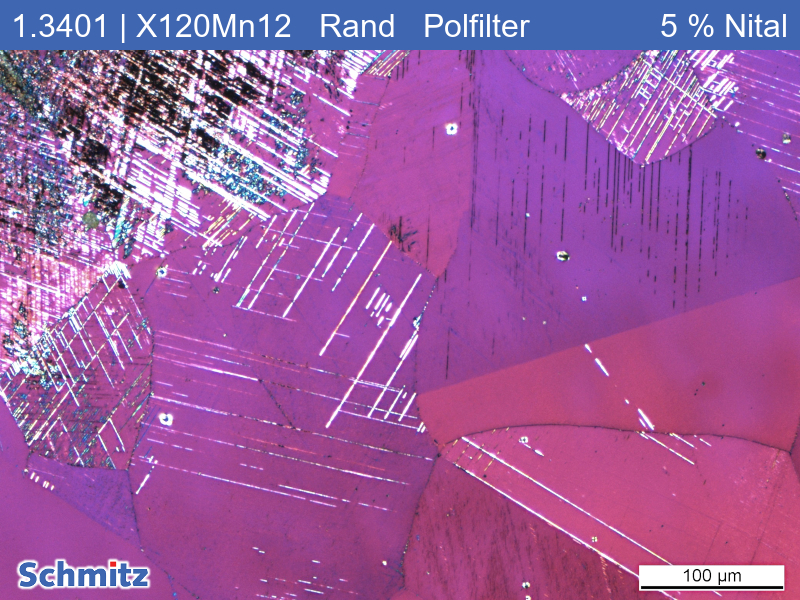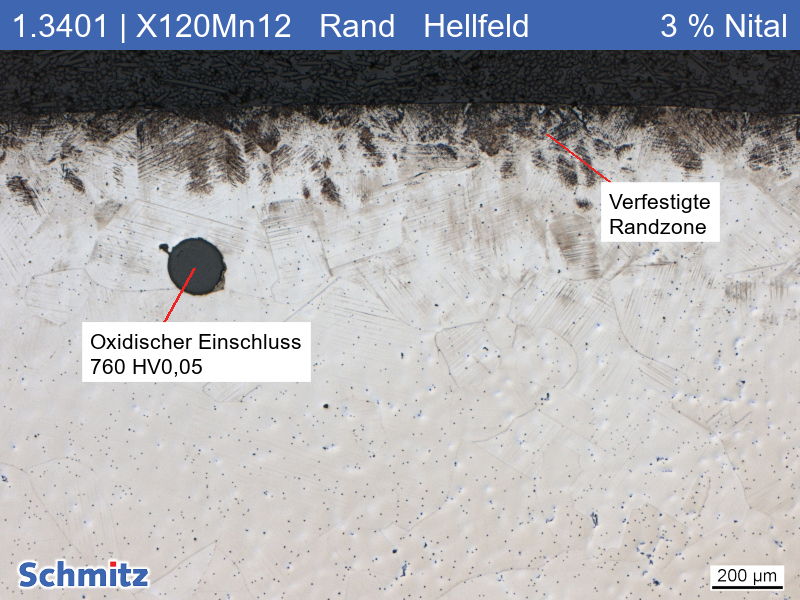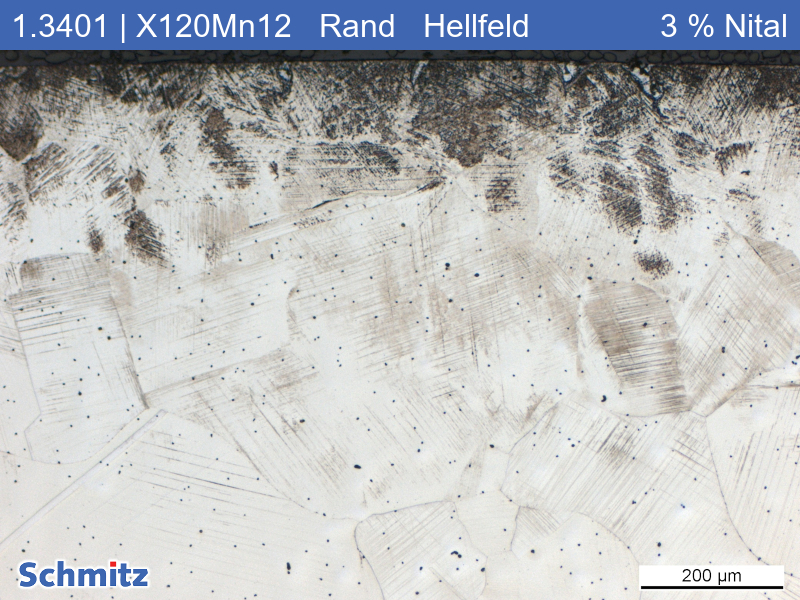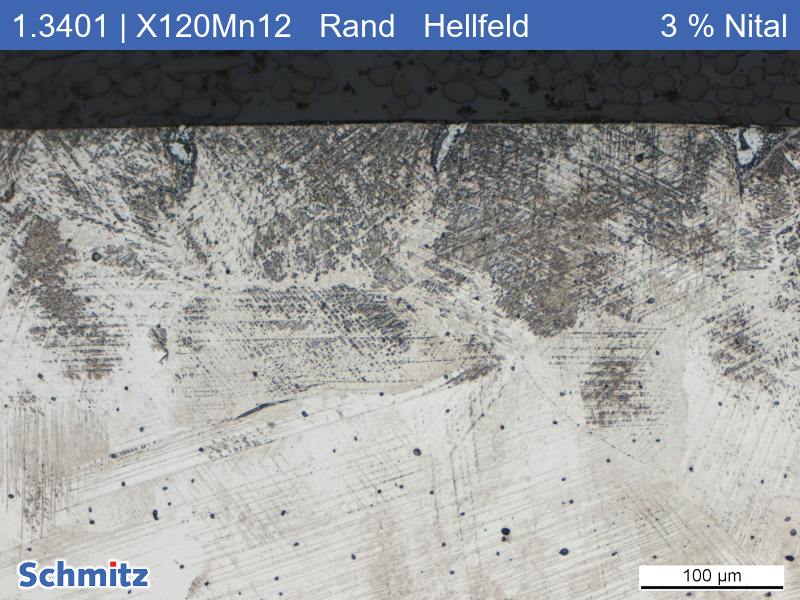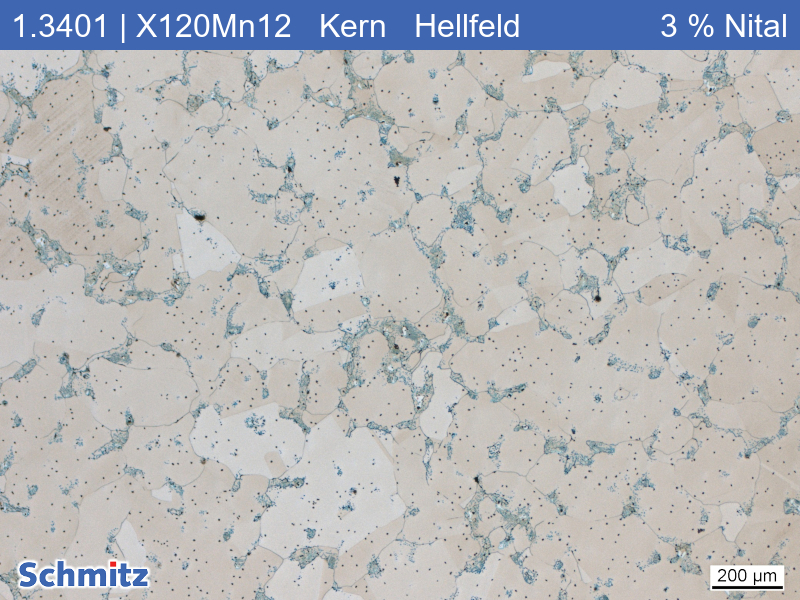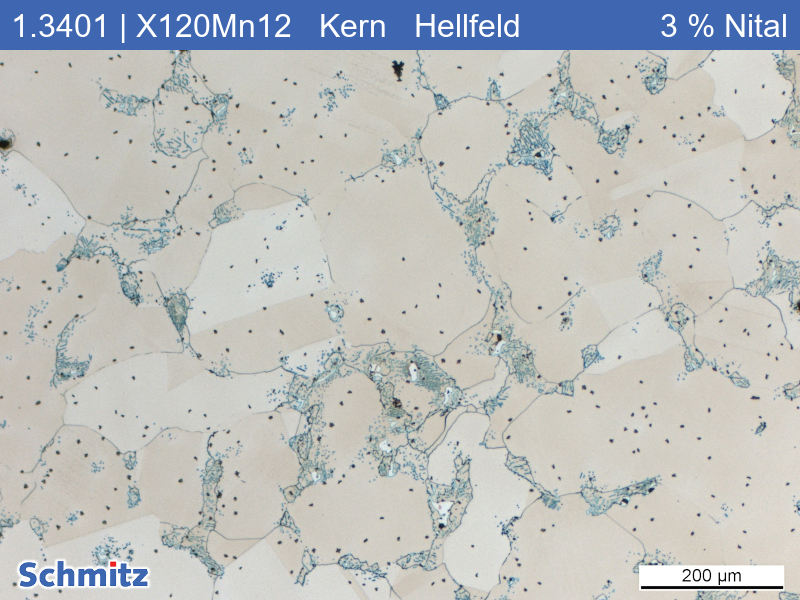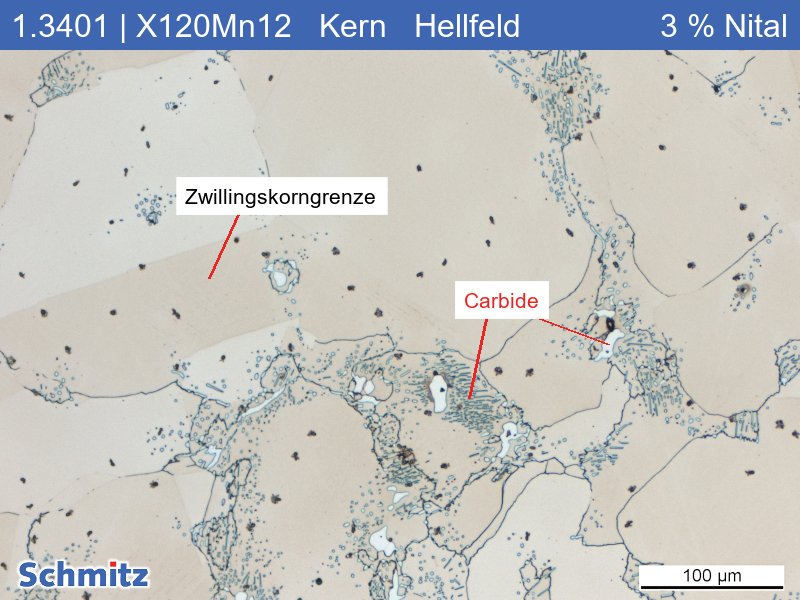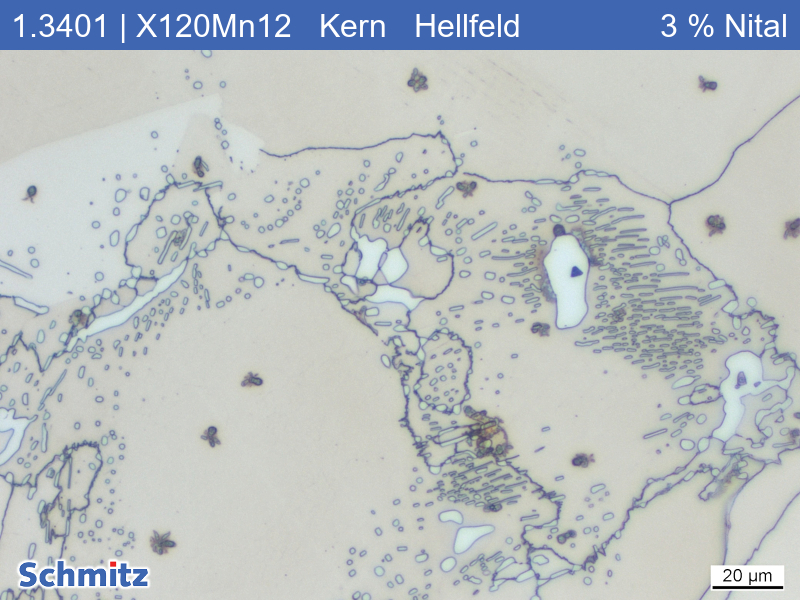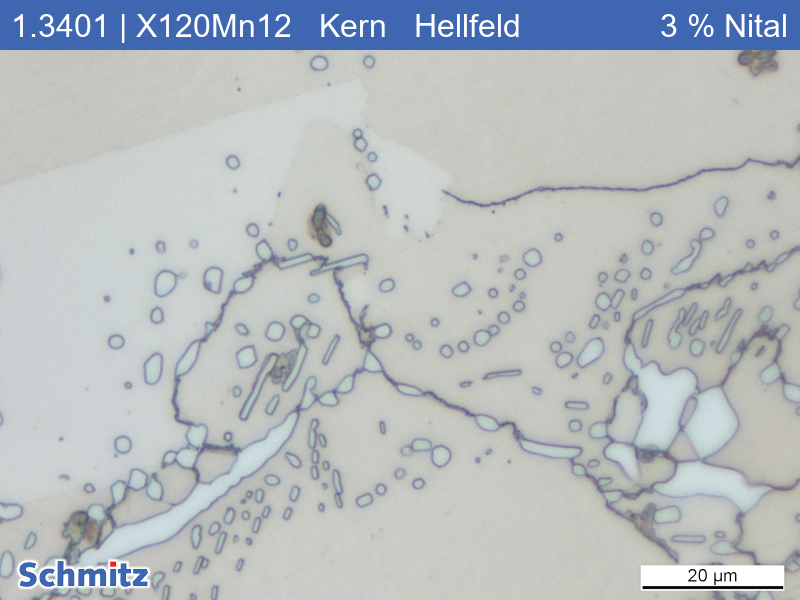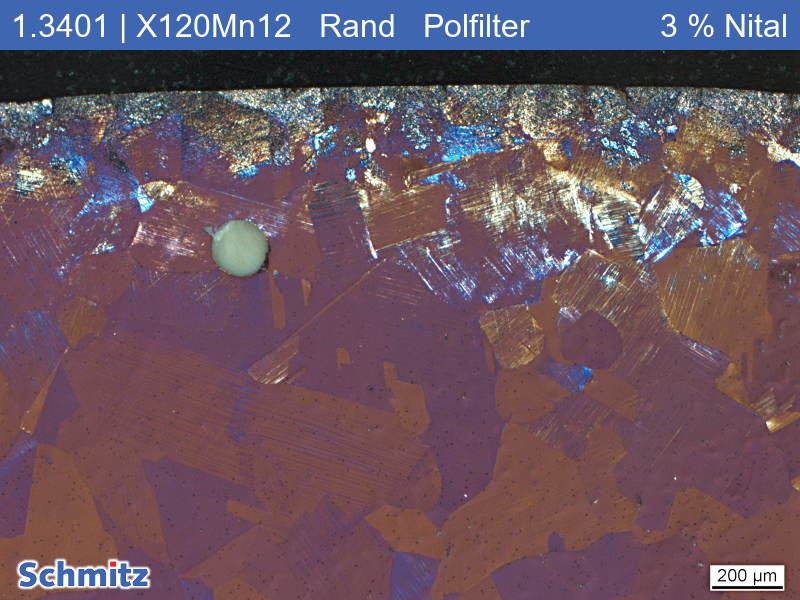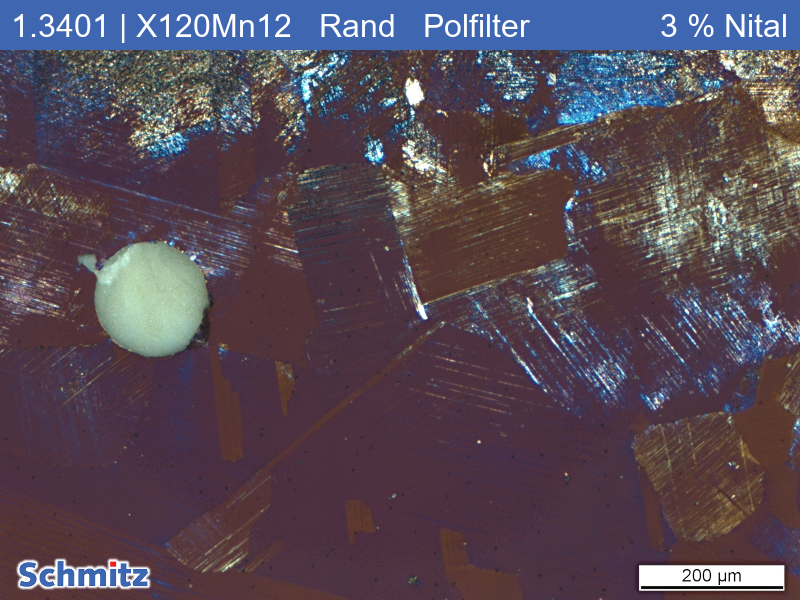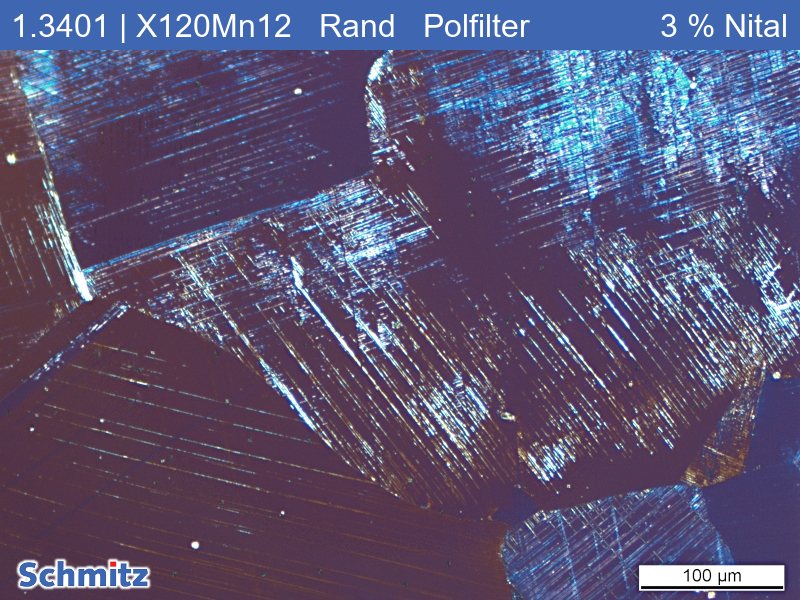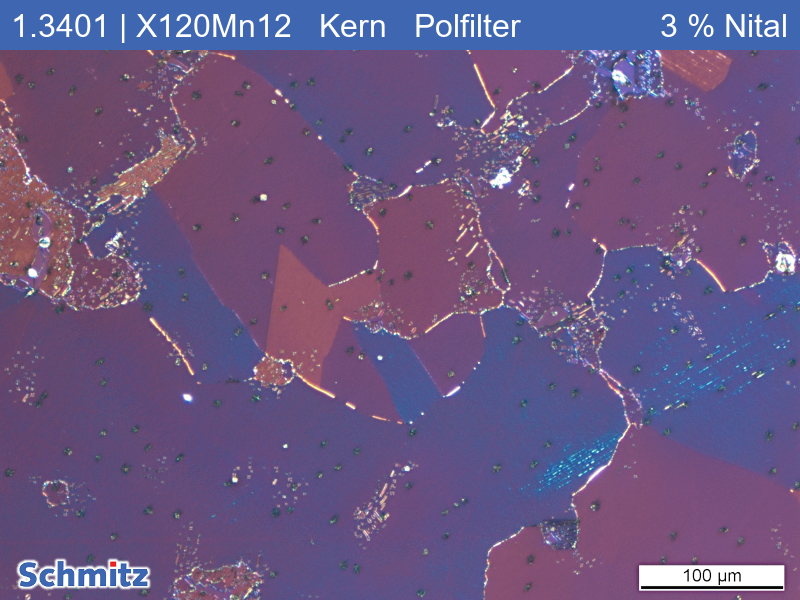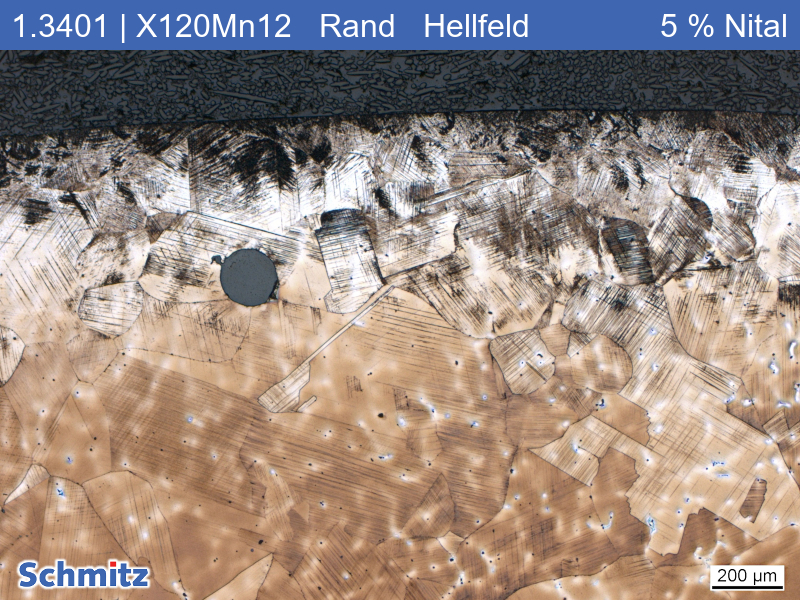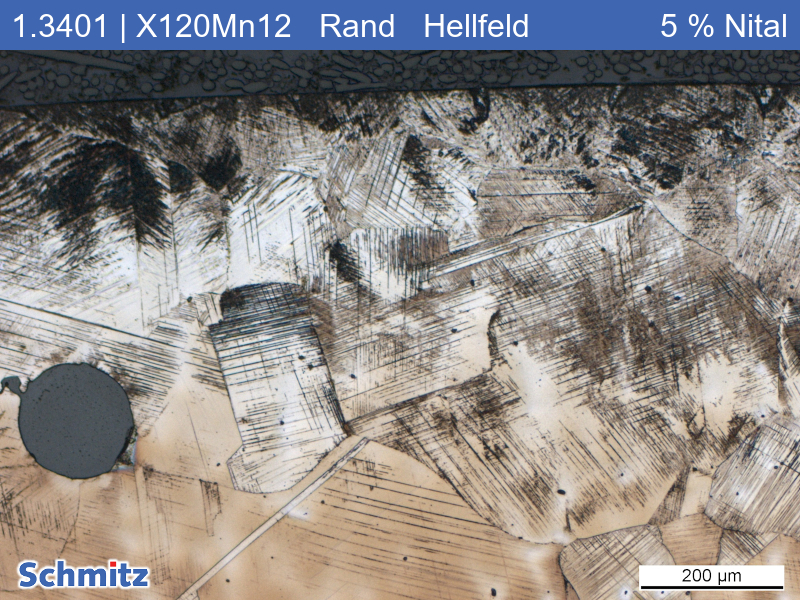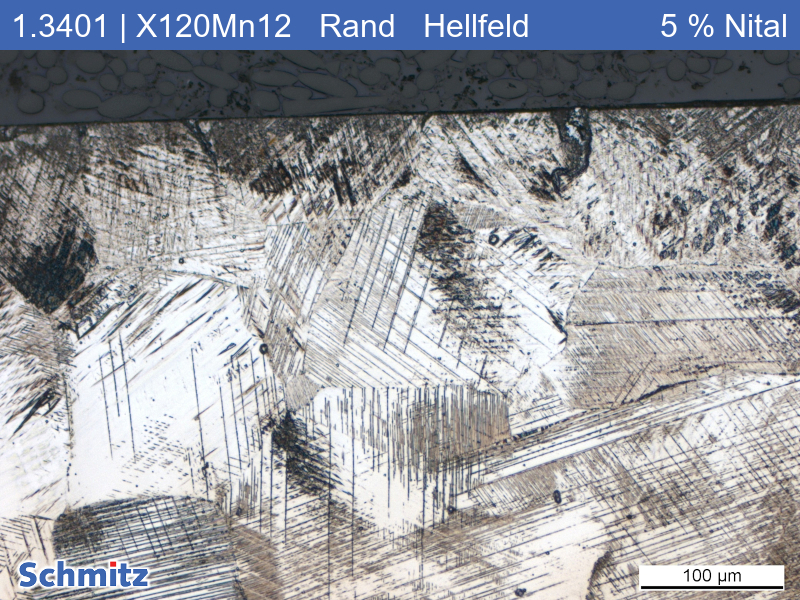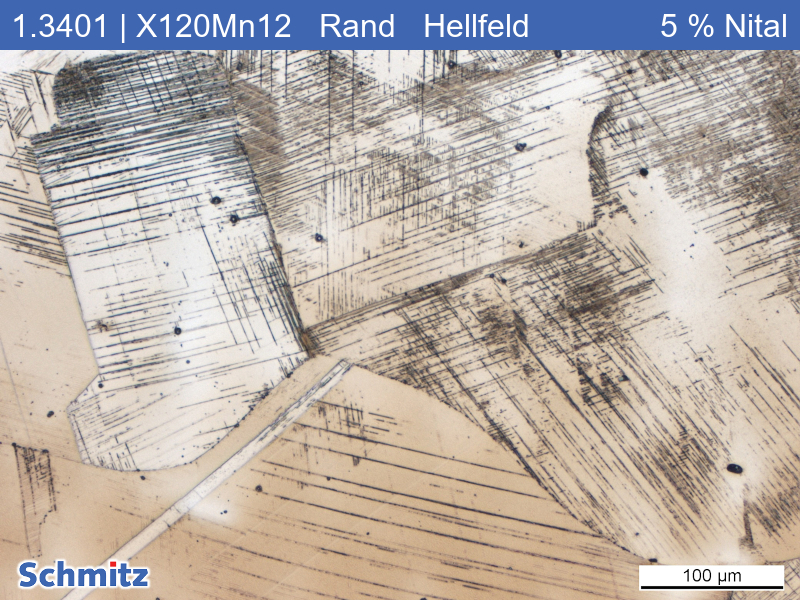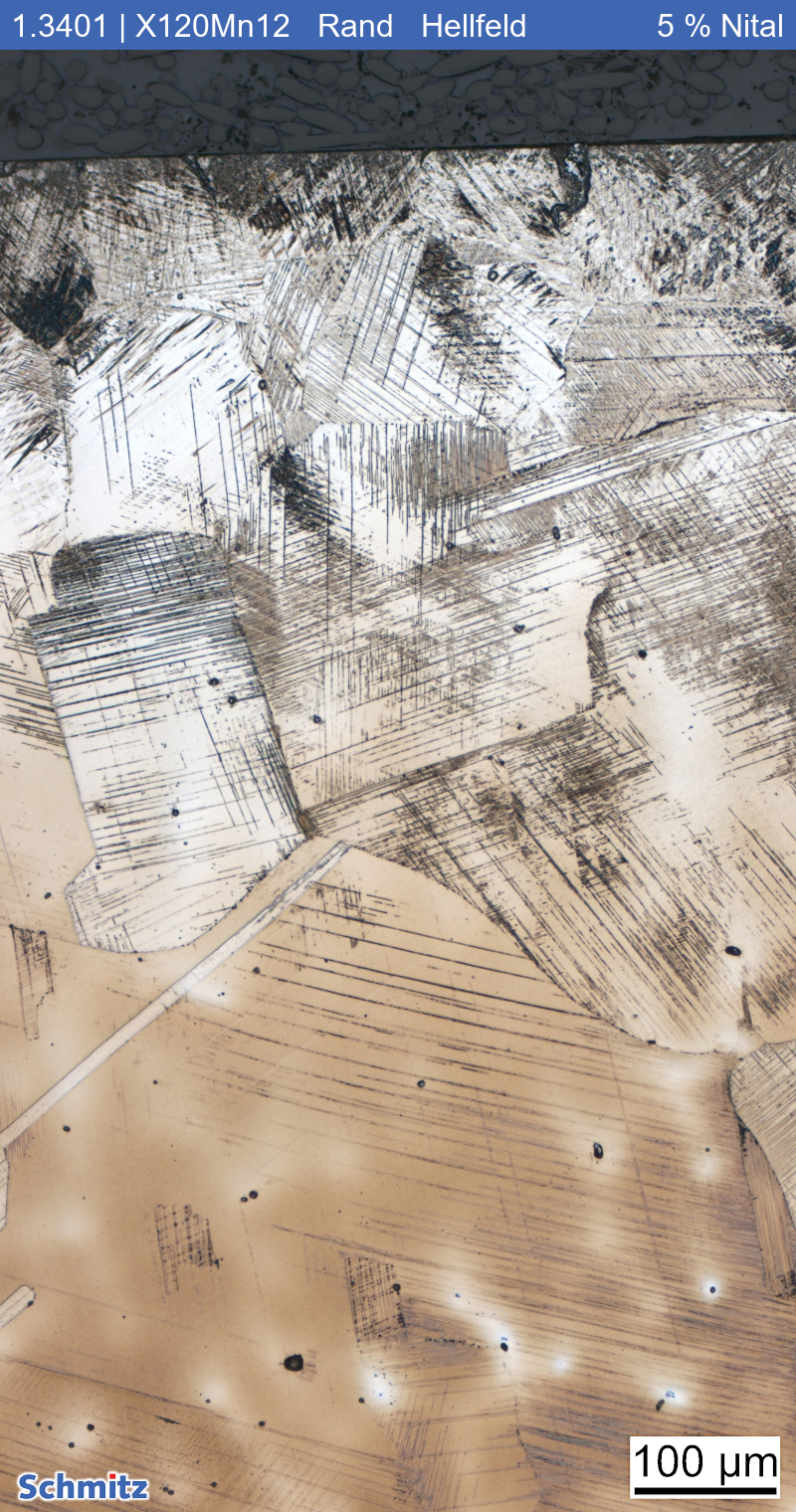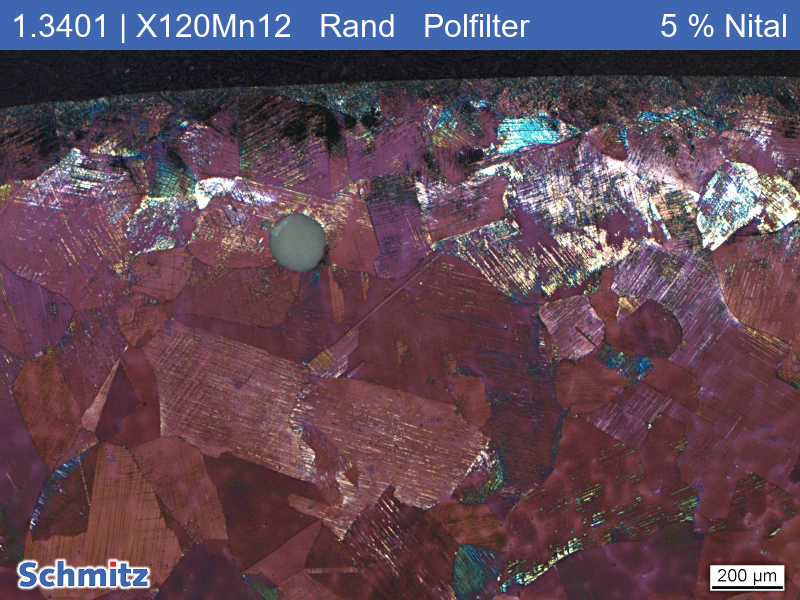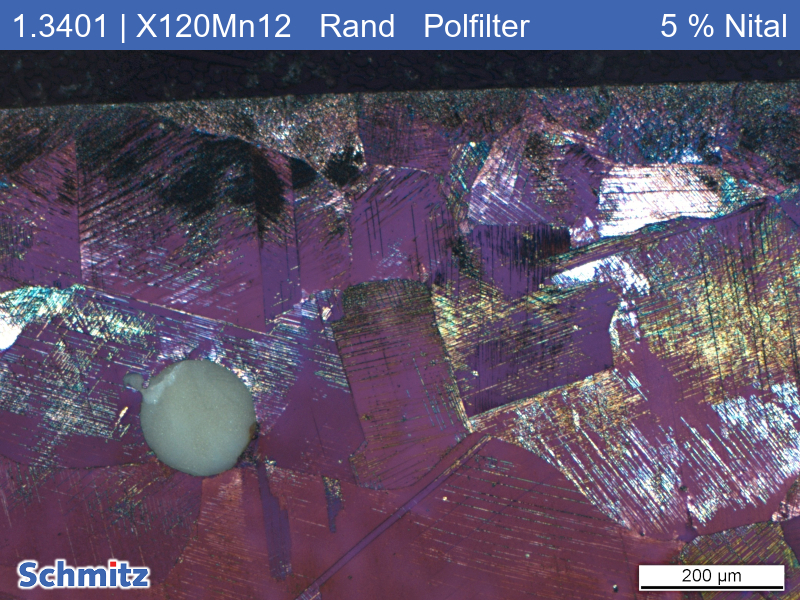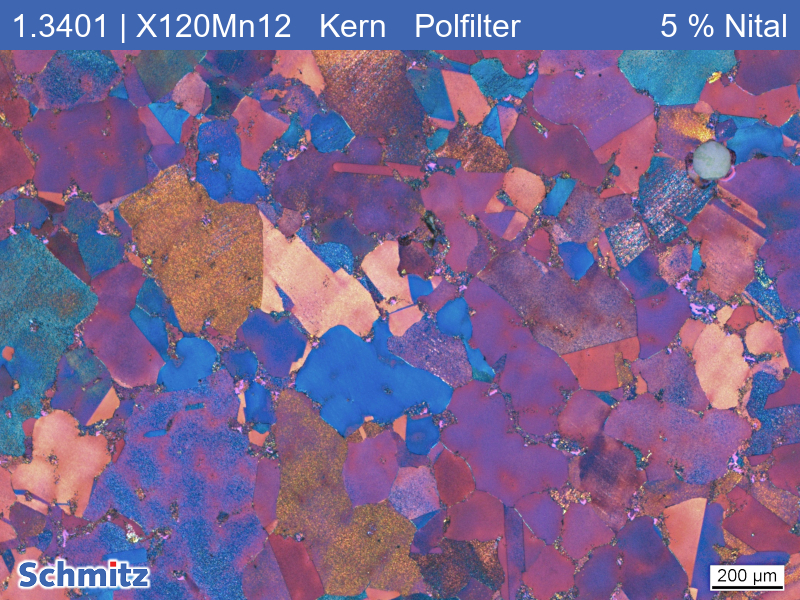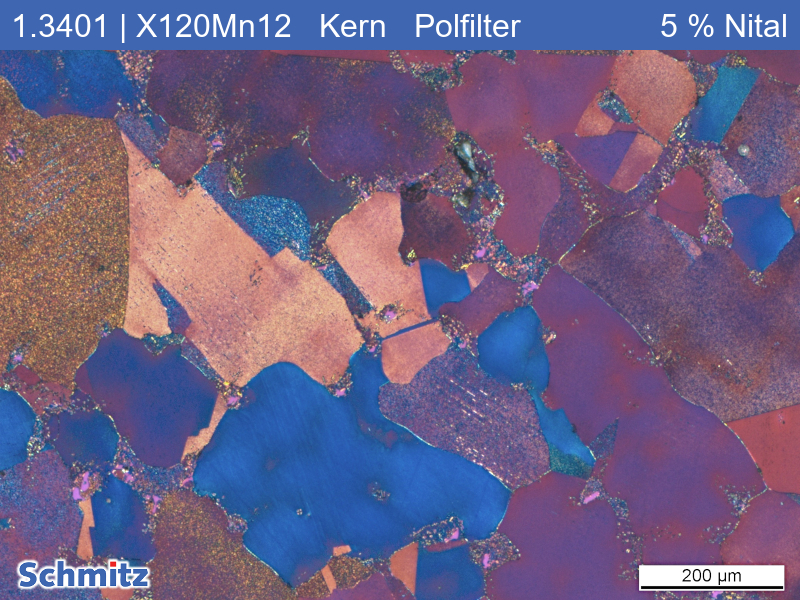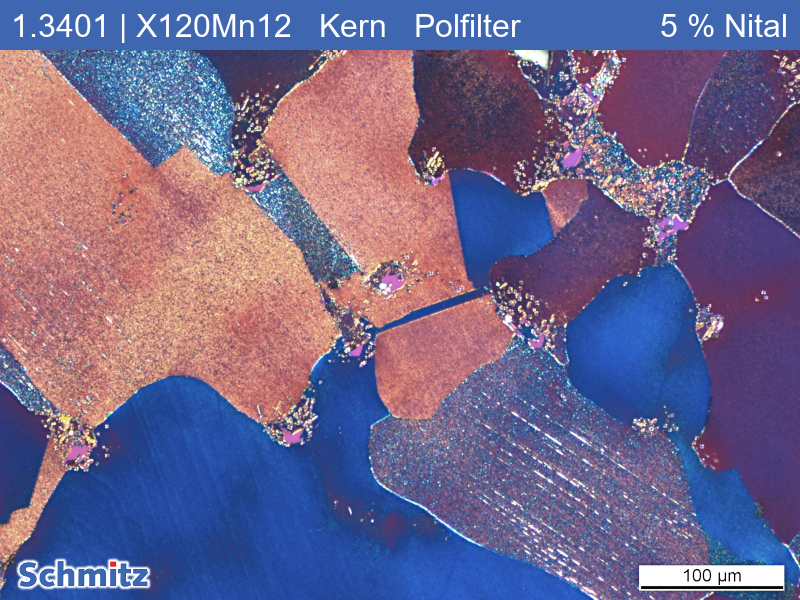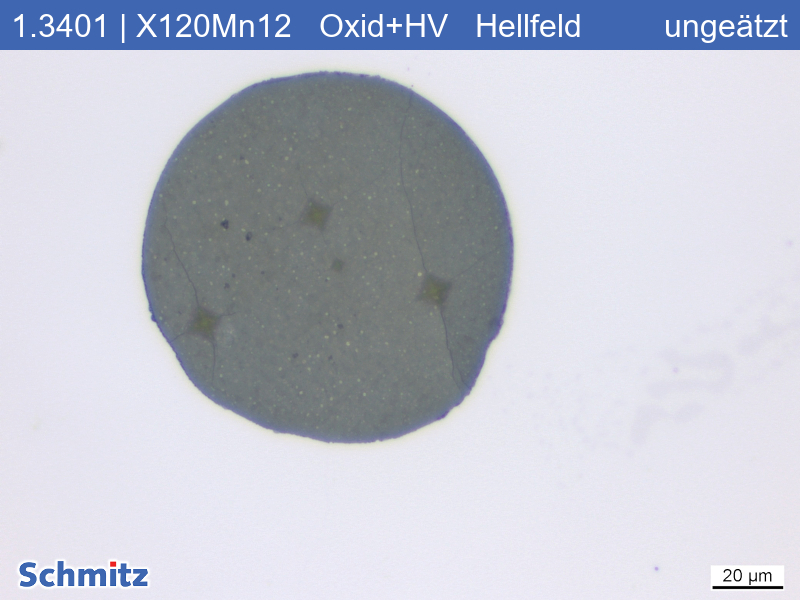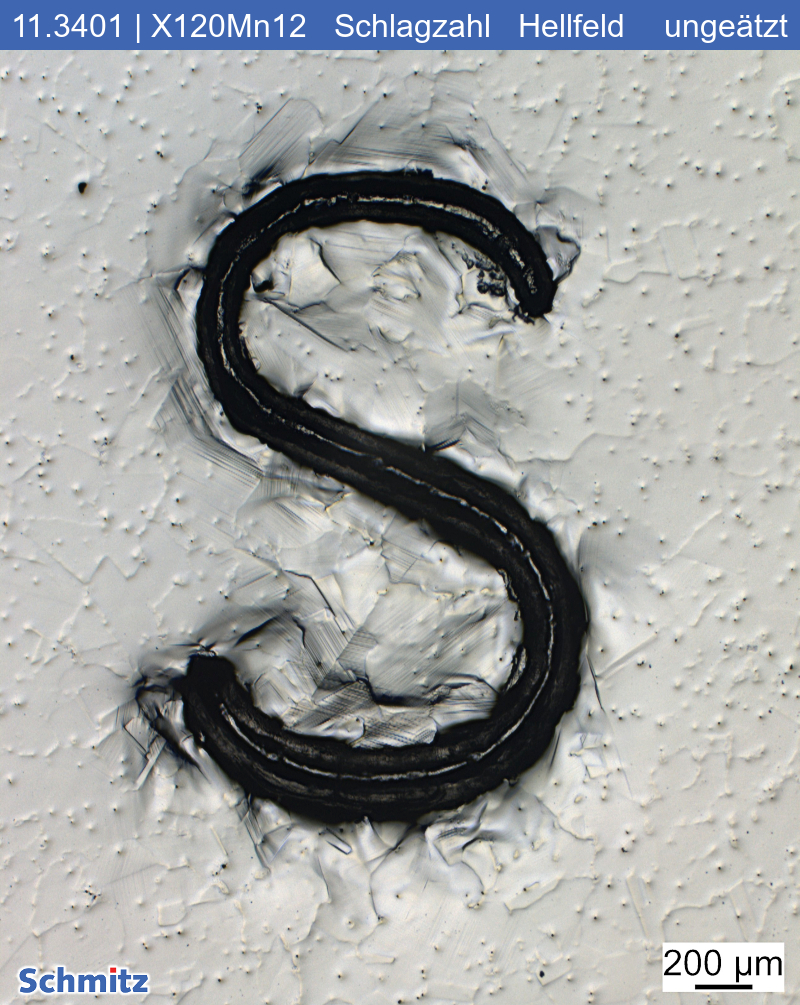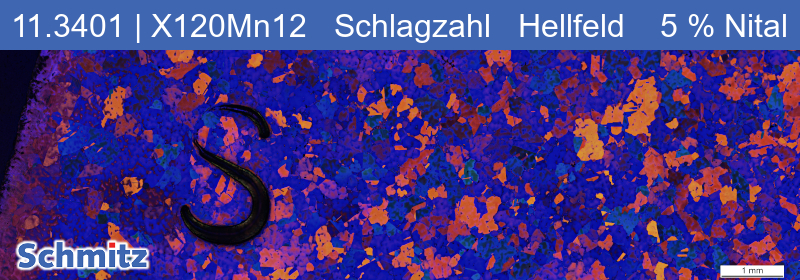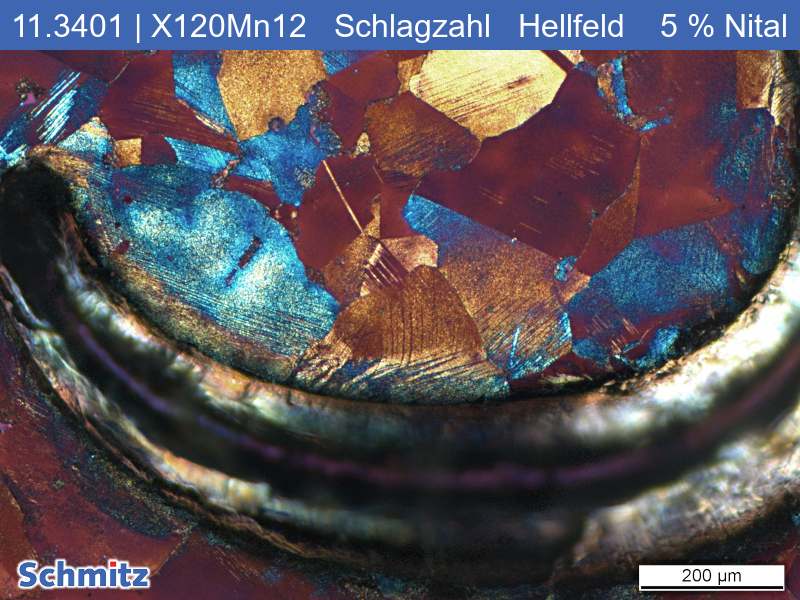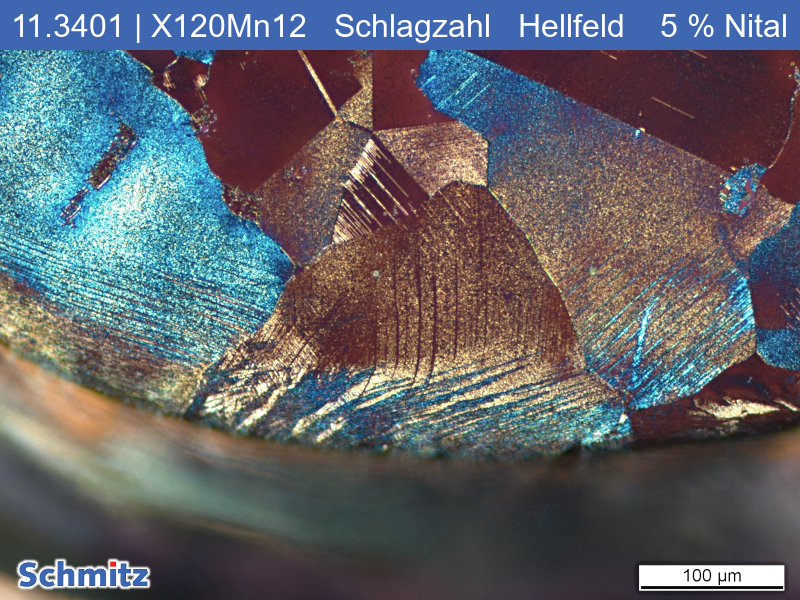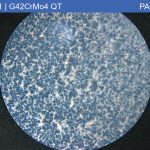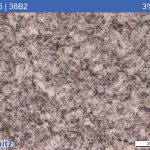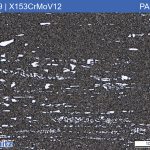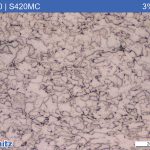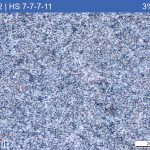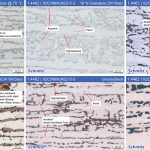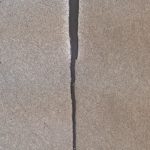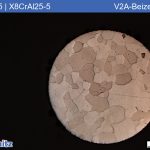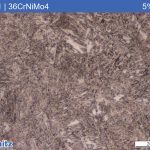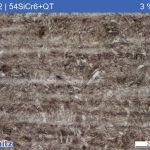1.3401 | X120Mn12 Strain-hardened
| Numeric designation | 1.3401 |
|---|---|
| Chemical designation | X120Mn12 |
| State | Strain-hardened |
| Etching | 3% Nital |
X120Mn12 is a high-manganese steel that is known for its high wear resistance and hardness. The wear resistance is achieved by the high manganese content and an impact or pressure load during use. The hardness of this sample is 36 HRC. The white shining carbides (presumably Mn or Si-Mn carbides) are quite evenly and finely distributed in the microstructure and contribute to the high hardness.
According to the diagram for the two-material system iron-manganese, a ferritic microstructure should be present with this manganese content.
However, the iron-manganese-carbon three-phase diagram must be considered here, as an increase in the C content leads to a stabilization of the austenite.
In addition to the carbides, the microstructure in the core therefore consists of austenite with the typical annealing twins.
The large, non-metallic inclusion near the edge is an oxide with a hardness of 760 HV0.05.
At the edge of the sample there is a deformation hardening, the hardness increases here by 16 % from 287 HV0.5 in the core to 334 HV0.5 at the edge. It is questionable whether the mechanism underlying the hardening is TWIP (TWinning Induced Plasticity) or TRIP (TRansformation Induced Plasticity). It is not possible to differentiate the “lines” into twins (TWIP) or epsilon martensite (ε-martensite, TRIP) on the basis of the pure micrograph; this would require a scanning electronic examination using the EBSD signal.
According to the literature, deformation twins are to be expected with this material, i.e. the hardening was caused by the TWIP effect.
An impact number “S” was applied to the sample, which also resulted in deformation hardening, presumably also due to the formation of twins.
The sample was first etched slightly weaker with 3 %, then stronger with 5 % Nital and recorded both in bright field and in polarized light.

